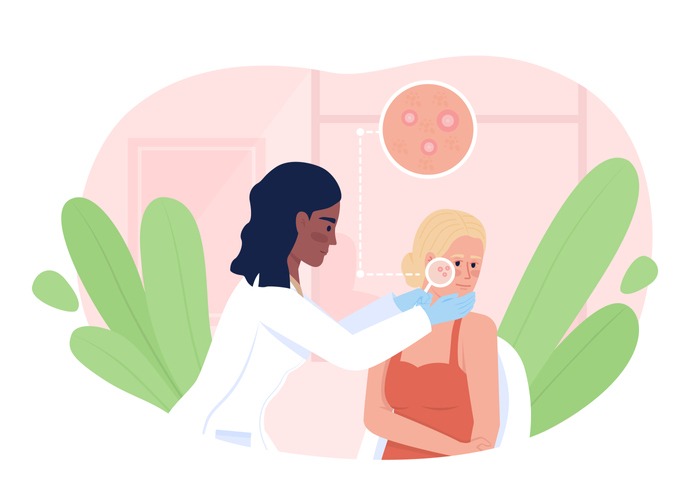
This is an edited version of an article that originally appeared on Medscape
This is a summary of the Primary Care Dermatology Society (PCDS) guidance on the treatment of acne in primary care. It includes a primary care treatment pathway, practical advice, maintenance advice, and top tips and myth busting.
Practical advice
- Topical retinoids should be used for all grades of acne. Adapalene is better tolerated than other topical retinoids. Topical retinoids are contraindicated in pregnancy
- The irritant reaction with topical retinoids and benzoyl peroxide (BPO) can be ameliorated by gradual introduction, for example, by short contact initially (tea time to bed time) or less frequent application (two or three times a week). Concurrent use with light noncomedogenic emollients may be useful
- Azelaic acid may be beneficial in patients with darker skin, in which acne can lead to hyperpigmentation
- BPO can cause bleaching of fabric
- Oral antibiotics should not be used as sole treatment. They should be prescribed with a topical retinoid and/or a BPO. Tetracyclines are first line and all show similar efficacy. Lymecycline and doxycycline are likely to have better adherence because of their once-daily dosage. Minocycline should not normally be used in view of its higher risks. No tetracycline should be used in those aged under 12 years. Erythromycin is second line (first line in pregnancy and in children) owing to its high bacterial resistance. Trimethoprim is an option, but uncommonly used in primary care
- Oral contraceptives: unopposed progesterones (including LARCs) can make acne worse. Second- and third-generation combined oral contraceptives are generally preferred. Co-cyprindiol (Dianette) is used in moderate-to-severe acne when other treatments have failed, and discontinued 3 months after the acne has been controlled
- Combination products: Combining topical treatments is recommended for most people with moderate acne (ref: NICE CKS). Combination products improve adherence
Overview of Combination Products for the Treatment of Acne
Epiduo
Advantages
- No issue with antibiotic resistance
- Anticomedonal
Disadvantages
- Irritation can be a problem but will often settle within 4-6 weeks
Treclin
Advantages
- Broad spectrum of action
- Anticomedonal
Disadvantages
- Antibiotic resistance may limit the duration of treatment
Duac
Advantages
- Rapid onset of action on inflammatory lesions
- Two strengths available
Disadvantages
- No action on comedones
Maintenance
As acne is a chronic condition, it is advisable to use a topical retinoid for long-term maintenance. This may mean years. Occasional flares may require revisiting previously successful treatments.
Top tips and mythbusters
- Acne is not caused by a poor diet. However, the role of diet in acne remains controversial and a healthy diet is positively encouraged. There is some evidence that a high-GI diet can exacerbate acne.
- Poor hygiene is not a contributing factor to acne and aggressive washing is to be discouraged. Patients with acne should be encouraged to wash no more than twice a day using gentle, fragrance-free cleanser and dissuaded from picking and squeezing spots (pustules).
- Noncomedogenic make-up and emollients are recommended
- Acne is not infectious


Be the first to comment